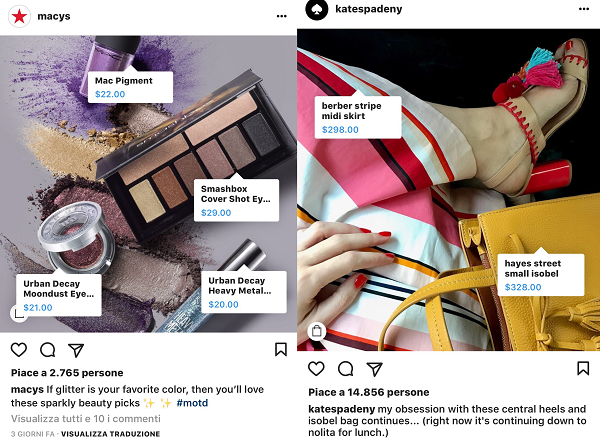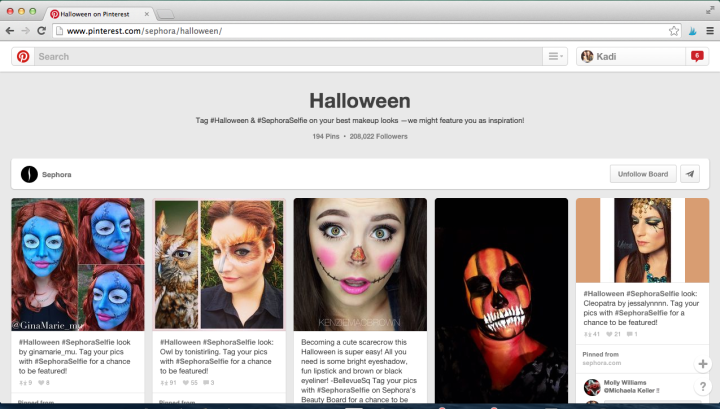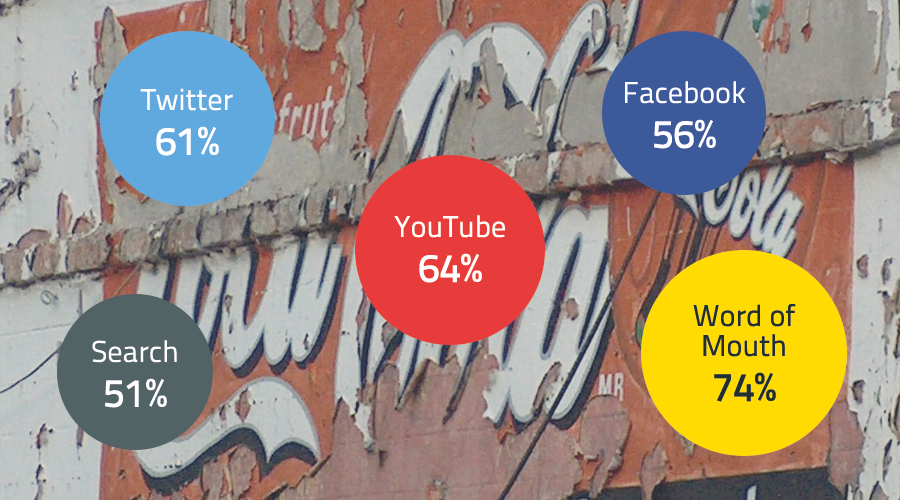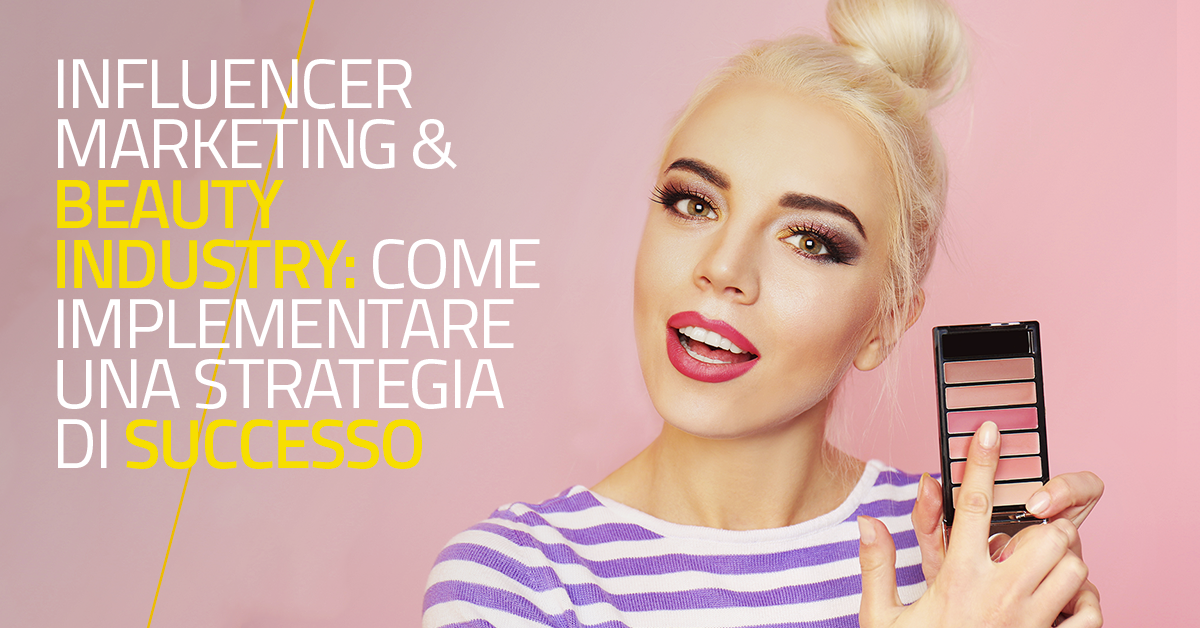La spesa per Halloween quest’anno si prevede raggiungerà i 9,1 miliardi di dollari soltanto in America, ovvero l’8,3% in più rispetto alla cifra record dello scorso anno di 8,4 miliardi di dollari. La ricorrenza della notte delle streghe, ormai da diversi anni, riempie le pagine dei social network e non lascia indifferente nessuna industry. Moltissimi brand dal food al fashion, passando per il beauty e l’interior design, cercano di attirare l’attenzione della propria audience cavalcando questo evento.
Una ricerca della National Retail Federation stima che per questo Halloween il 35% dei consumatori troverà ispirazione per il proprio costume online, mentre il 30% la cercherà negli store fisici. Il 20% dei consumatori baserà invece le proprie scelte sui consigli di amici e familiari, il 18% cercherà ispirazione su Facebook o Pinterest, il 17% sarà influenzato dalla cultura popolare e il 14% dalla carta stampata.
Se mettiamo insieme l’influenza di amici e familiari con i contenuti di Facebook e Pinterest, ci rendiamo conto che il 72% delle persone sarà influenzato dalle suggestioni ricevute tramite social network. In generale, l’83% delle persone mostra maggiore propensione all’acquisto se la raccomandazione arriva da persone di cui si fida, come indicato nella nostra ultima infografica sul valore dell’Influencer Marketing ed è per questo che devi includere l’Influencer Marketing nelle tue campagne di Halloween.
D’altronde alcuni numeri legati al marketing tradizionale, ci fanno capire come alcune strategie necessitino di essere aggiornate. Nel 2015 il mondo del publishing ha visto una perdita di quasi $22 miliardi a causa del crescente utilizzo di sistemi di adblocking e alla fine del 2016 erano oltre 600 milioni i dispositivi ad utilizzare questo tipo di tecnologia per il blocco delle inserzioni pubblicitarie. Contrastare questo fenomeno è molto difficile, considerando che il 74% degli utenti afferma di abbandonare immediatamente i siti che non consentono la navigazione a chi ha un sistema di adblocking attivo. Il rimedio a questi numeri apparentemente scoraggianti è proprio l’Influencer Marketing e Halloween è un’occasione che si presta perfettamente per interagire con gli utenti ed incoraggiarne la creatività. Perché dunque non accaparrarsi una fetta di questa festività così popolare anche in Italia? Naturalmente per raggiungere la tua target audience in maniera efficace è necessario che la tua strategia di marketing sia coerente con la tua nicchia di mercato. Per aiutarti a trovare l’ispirazione giusta per il tuo brand, abbiamo raccolto alcune delle campagne di Halloween più riuscite degli ultimi tempi corredandole con i nostri consigli. Enjoy!
Per le aziende focalizzate sul fashion, sul makeup e i costumi per feste, le opzioni per celebrare la notte più spaventosa dell’anno sono abbastanza ovvie, ma questo vuol dire anche che per queste industry la competizione è più feroce, perciò è necessario trovare delle idee originali per essere sicuri che funzionino. Esistono molte campagne social legate ad Halloween e uno dei pionieri in questo senso è stata la catena di discount statunitense Target con la sua campagna Instagram del 2014. In maniera molto originale, Target ha utilizzato i tag sulle foto di Instagram per creare una mappa che guidava gli utenti verso i profili che avevano condiviso idee originali per Halloween utilizzando i prodotti della catena. La campagna ha funzionato molto bene nonostante le limitazioni che Instagram aveva al tempo. Oggi infatti è disponibile la nuova funzione tag shopping che consente di taggare tutti i prodotti che si trovano all’interno di una foto scegliendoli dal catalogo del commerciante, in modo da creare un legame diretto tra utente e brand. Inoltre con la feature che consente di pubblicare immagini multiple è possibile, ad esempio, creare una mini guida per immagini in un unico post senza invadere il feed della tua audience con tante foto diverse. Questi sono alcuni spunti per l’utilizzo di Instagram, ma in generale ricorda di controllare sempre gli ultimi aggiornamenti dei social network poiché si evolvono in fretta creando sempre nuove feature per migliorare l’esperienza degli utenti e delle aziende che li utilizzano.
Anche i brand che hanno un’affinità meno diretta con Halloween possono inserirsi in questa festa in maniera creativa. Nel 2012, ad esempio, LG ha realizzato il video candid camera “So Real it’s Scary”, in cui si vedono dei tecnici sostituire il pavimento di un ascensore con degli schermi che una volta in azione mostrano il crollo del pavimento stesso generando non poco spavento tra i malcapitati. È stato un ottimo modo per focalizzare l’attenzione sul concetto chiave della loro campagna, ovvero “immagini così belle da sembrare reali”, in maniera nuova e divertente. Non c’è nessuna voiceover o interruzione, lo spot parla da solo e ancora oggi, dopo anni, il video YouTube continua ad essere guardato e ha collezionato quasi 40 milioni di visualizzazioni.
Lo scorso anno WD-40 ha realizzato una campagna molto divertente ed engaging per quello che viene comunemente ritenuto un prodotto abbastanza noioso seppur spesso utile. In che modo un’azienda che produce lubrificanti per porte e cerniere può inserirsi nella ricorrenza di Halloween? Con un’app che fa cigolare in modo spaventoso le porte di casa, ovviamente. Oltre ad essere uno scherzo molto divertente, questa idea si è rivelata anche uno strumento utile per attirare l’attenzione delle persone su quelle parti della casa che necessitano di una piccola manutenzione, come appunto le porte che cigolano. Piccolo tocco di classe: il teschio presente sull’app è composto da un’insieme di oggetti che possono avere bisogno dell’uso del lubrificante WD-40. Questa strategia mostra come il marketing moderno sia ormai concentrato sul non interrompere l’esperienza degli utenti creando contenuti ingaggianti e utili.
Lo scorso anno Airbnb ha lanciato una campagna ambiziosa in cui veniva offerto un soggiorno tutto incluso nel famigerato castello di Dracula, aperto al pubblico per la prima volta dopo 70 anni. Il contest è stato vinto da una coppia fratello e sorella,Tami e Robin Varma, il cui nonno era un esperto di racconti gotici e vampiri. In questo modo il brand ha premiato degli utenti fedeli, perfettamente in linea con il servizio offerto, con la sua unique selling proposition e naturalmente con Halloween. I risultati sono arrivati: secondo i dati estratti da Meltwater, infatti, la campagna ha generato oltre 4.964 conversazioni sui social media.
Un altro interessante esempio di campagna di Halloween di successo è quello di Sephora che ha invitato le sue clienti a scattarsi dei selfie usando gli hashtag #Halloween e #SephoraSelfie. Gli scatti migliori sono stati poi condivisi sul profilo Pinterest ufficiale del brand. Ad oggi la bacheca dedicata ad Halloween ha oltre 380.000 follower e rappresenta un modo molto efficace, seppur semplice, di creare passaparola attorno al proprio brand. Sebbene i prodotti beauty si prestino facilmente alla tematica di Halloween, Sephora ha trovato un modo sottile ed efficace per inserirsi nelle conversazioni online e incoraggiare l’utilizzo dei propri prodotti. Un altro aspetto interessante è il fatto di avere integrato il canale Pinterest nella propria strategia di marketing. Sephora infatti ha anche realizzato un redesign del sito che rende “pinnabili” tutte le immagini presenti e incluso link a Pinterest in tutte le sue comunicazioni. Questo dimostra che Pinterest è un canale che ben si adatta alla condivisione di contenuti visual permettendo di generare awareness e passaparola attorno a un brand.
Un’analisi di Synthesio ha rivelato che durante lo scorso Halloween, le conversazioni online sul tema sono state generate principalmente da persone di età compresa tra i 18 e i 25 anni, immediatamente seguiti dalla fascia 25-35. Ricordati, quindi, di concentrare la tua attenzione su queste fasce di età che sicuramente sono molto ricettive.
Inoltre è importante anche ricordare che la combinazione di elementi visual accattivanti e contenuti divertenti è la chiave per il successo. Per aiutarti a trovare l’idea giusta poniti le seguenti domande: il mio prodotto è adatto per una remake “spaventoso”? Posso farne una versione DIY? Oppure posso chiedere a degli Influencer di crearne delle versioni personalizzate a tema “notte delle streghe”? Halloween è un ottimo momento per incoraggiare le conversazioni sia con i tuoi potenziali clienti sia con quelli già acquisiti, contribuendo a dare un’immagine più divertente e uncoventional del tuo brand agli occhi della tua audience.
Anche se diverse per piattaforma usata, settore merceologico e idea di base, le case history che abbiamo presentato in questo articolo hanno tutte un aspetto in comune: sono tutte focalizzate sul coinvolgere gli utenti in maniera divertente e nel dare una nuova veste, inusuale e creativa, ai propri prodotti. Questo tipo di campagne sono molto utili per creare brand awareness, rafforzare la propria brand image , acquisire nuovi clienti e, naturalmente, mostrare i propri prodotti.
Con questi esempi puoi creare la tua campagna di marketing per Halloween e scegliere di utilizzare gli Influencer per veicolare contenuti originali e per creare buzz attorno alle tue attività social. Gli Influencer ti aiuteranno ad amplificare il tuo messaggio e a creare passaparola di qualità attorno al tuo brand. Per maggiori informazioni su come coinvolgere gli Influencer nella tua strategia di marketing, dai un’occhiata alla nostra sezione dedicata ai brand.
Buon Halloween!
Questo articolo è disponibile anche in: Inglese





